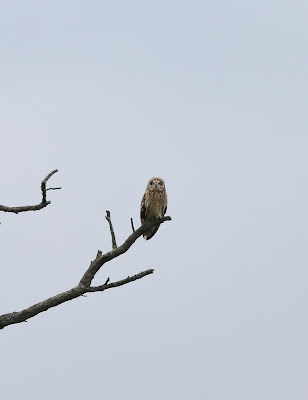The feeding station / Scaldwell Bay area was the place to be. I began scanning from here, looking for the drake Ring-Necked Duck that had been around about a week, playing hide and seek amongst the big numbers of wildfowl present.
It took a good 25 minutes, but thankfully I found him, in with a distant feeding flock of Tufties and diving regularly between the Walgrave & Scaldwell Bays. After quite a while, it slowly made it's way into the mouth of the Scaldwell Bay, where it stayed near to the Maytrees Hide, for the rest of the time I was there. My 2nd Northants Ring-Necked, after the Billing GP female some 3-4 years ago.

There was plenty more of interest and the Scaldwell Bay held lots of wildfowl, including a single Bewick's Swan and 10-11 Whooper Swans - in fact a very rare chance to see all 3 species of swan together in the county!


The now usual Great White Egrets were in situ, with at least two about. A Ruff, a couple of Green Sands, c3 Red Crested Pochard and several Pintail completed an impressive supporting cast.
That wasn't all...a trip over to the dam, confirmed the continued presence of a single juvenile Great Northern Diver lingering in the Yacht Club Bay, too distant for any picture.


























































